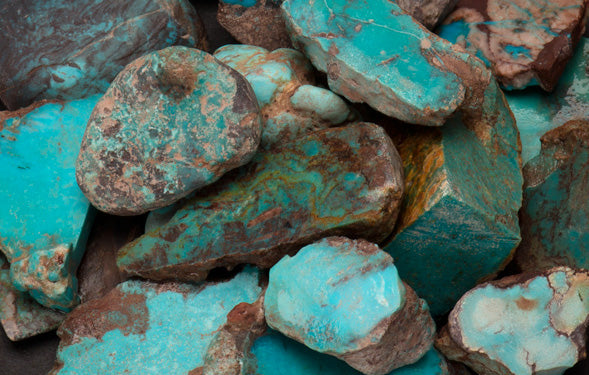Turquoise is one of the oldest stone in man’s history, the talisman of kings, shamans, and warriors. It is a stone of protection, strong and opaque. Its unique shade of blue, often blue-green, lends it name, Turquoise. The delicate veining or mottled webbing in cream or brown is inherent to the stone and serves to enhance its character. The name Turquoise is derived from the French, pierre turquoise, meaning “Turkish stone,” because the trade routes that brought Turquoise to Europe from the mines in central Asia went through Turkey, and Venetian merchants often purchased the stone in Turkish bazaars.
History Newsflash: Turquoise beads were found in Iraq dating back to 5000 B.C. and the Egyptians were mining the stones in the Sinai in 3200 B.C. The death mask of Tutankhamun was studded with Turquoise, as were the mosaic masks dedicated to the gods, the fabulous inlaid skulls, shields and power statues of Moctezuma, the last ruler of the Aztecs

